Ravenguard
Backstory: The player's investigation has revealed the source of the Murmuring Ichor and how its over consumption causes its drinkers to be turned into blood crazed zombies. Players must race back to the city as it’s the eve of the Darkshire Fete, the city’s grand annual carnival. If they can’t stop the ichor's spread, there will be carnage on the streets. Please forgive my voice acting!
Engine: Unreal 5.3
Genre: 3rd Person RPG
Platforms: PC
Team size: Solo
Duration: 12 weeks
Software used: Inkscape, MidJourney, Audacity.
What did I do?: I designed the level layout, scripted gameplay and cutscenes using blueprints and sequencer, placed assets, and did the level art. I did not make the combat system (although I tweaked it for the level), the models, textures, or the sounds/music.
Player Centric Design
Before starting this project, I watched a lot of people playing similar games (such as Dragon Age: Origins and Mass Effect) and analyzed their motivations.
1. Exploration. There were a lot of players of who didn't seem particularly engaged by combat, but they visibly lit up when they saw loot off in the distance and had to figure out how to acquire it.
2. Combat. Some players enjoyed treating combat as a puzzle, trying to figure out the optimal way to engage enemies and use their charcters' abilities.
3. Story. Most players were really interested in the characters and were motivated to progress their stories. Cutscenes seem as rewarding as loot for these players.
1. Game of Thrones moments. Players in this genre care a lot about the story, and I want to create shocking moments that players will talk with their friends about.
2. Escalating Tension. To amplify the "Game of Thrones moments," I want this level to gradually build up to the big moments.
3. Rewarding Exploration. Many RPG players love to explore, and I want to make sure the game provides meaningful rewards to encourage this behavior.
4. Combat Puzzles. Combat difficulty should escalate to challenge players in higher difficulties. Encounter design should provide players strategic options to increase their odds.
Design Pillars
Pre-Production
I created a Level Design Document where I storyboarded the level using MidJourney, outlined some key features and risks, and collected references.

I created a 2D layout in Inkscape.
Production: Whiteboxing
I started by whiteboxing with simpler shapes to define my sightlines and the sizes of spaces, and to test gameplay.
Then I started adding more detail to get a better feel for the architecture and identify potential performance issues.
Final product
Level Design Techniques
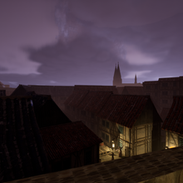
Weenies: The cathedral acts as a navigational landmark throughout the first half of the level as the player's objective is a beer hall located right at the base of the cathedral. As players progress through the level, they get to see the cathedral from a variety of angles as they get close to it.
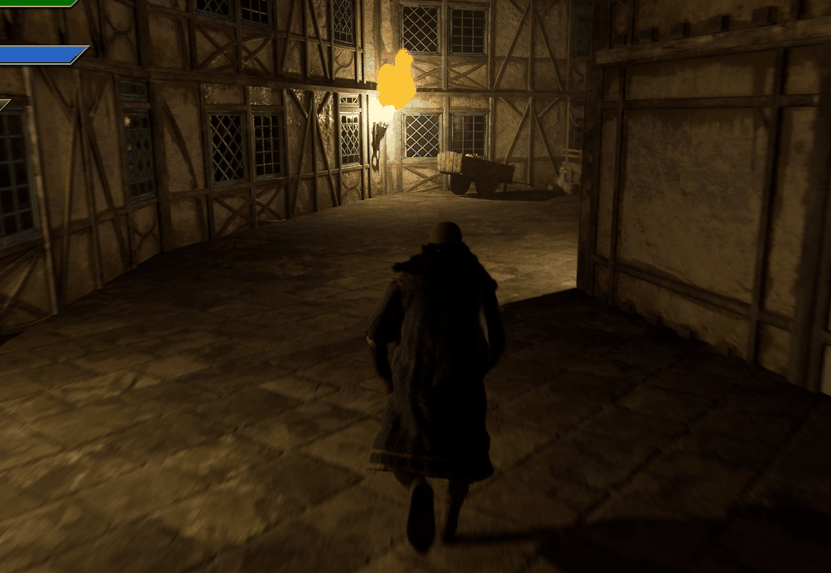
Funnel before reveal: Pushing the player into a specific space allows me to force a particular perspective on a scene.
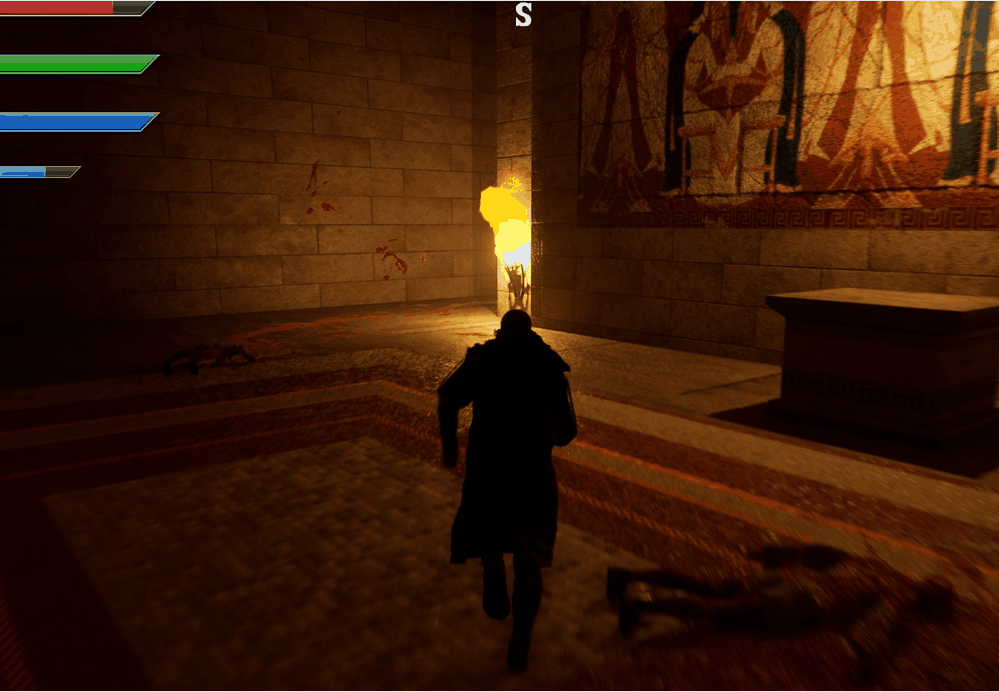
Environmental Storytelling: I use storytelling elements as a means of conveyance, for example, this trail of blood helps players identify the secret stair case behind the fresco, and piques their curiosity to investigate its source.

Creating tension: I use claustrophobic, bending spaces where players can't see their destination to make players feel uneasy. I also put them through a variety of uncomfortable liminal spaces such as dark alleys, bridges, and sewer tunnels. There's also a fake combat space.

Foreshadowing: I show players exploration spaces before they can access them. If they remember it, they'll be rewarded with a unique combat encounter and some epic loot!
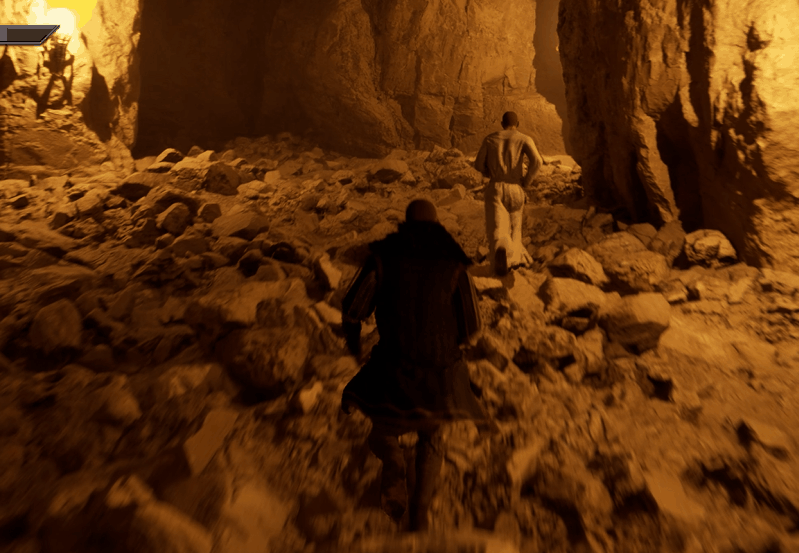
Movement: I use NPC movement to pull players forward.

Framing: I use geometry and lighting to highlight and pull players to objectives
Storytelling: Cutscenes
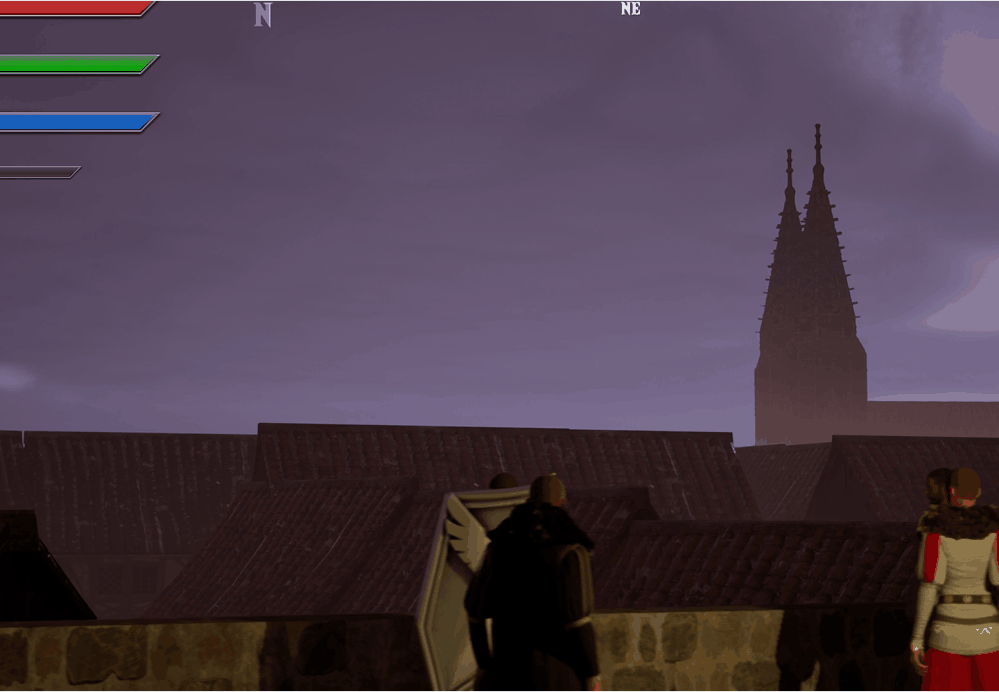
I use cutscenes to tell key story moments, in this scene, the player discovers that they appear to have arrived in the city in time as revelers have yet be corrupted by the murmuring ichor.
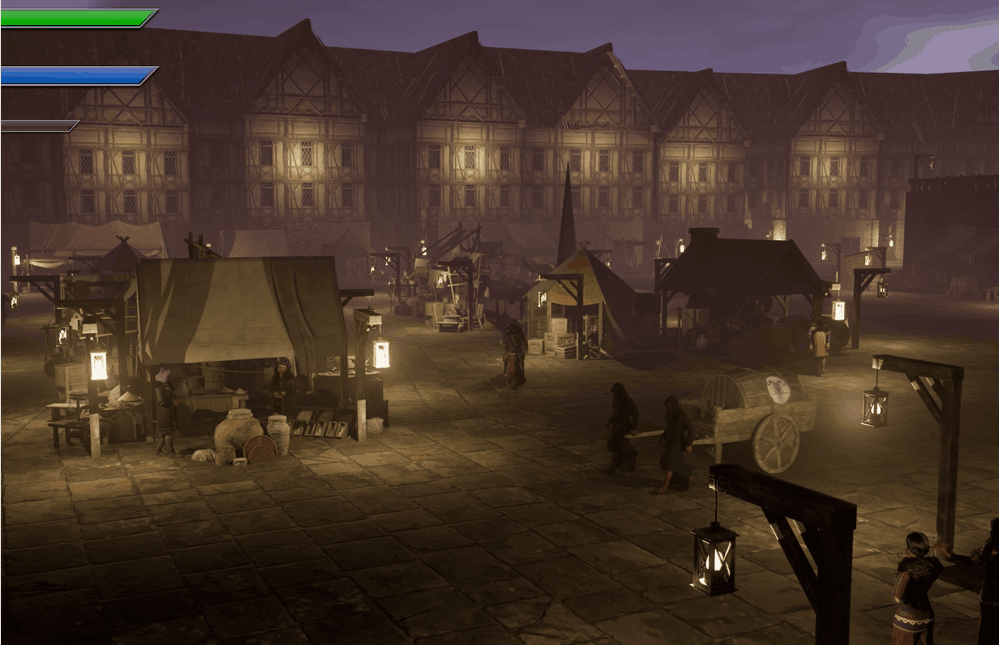
However, players soon discover that all is not well. The cultists are in the city and they're distributing the murmuring ichor! This foreshadows events to come and spikes the player's urgency.
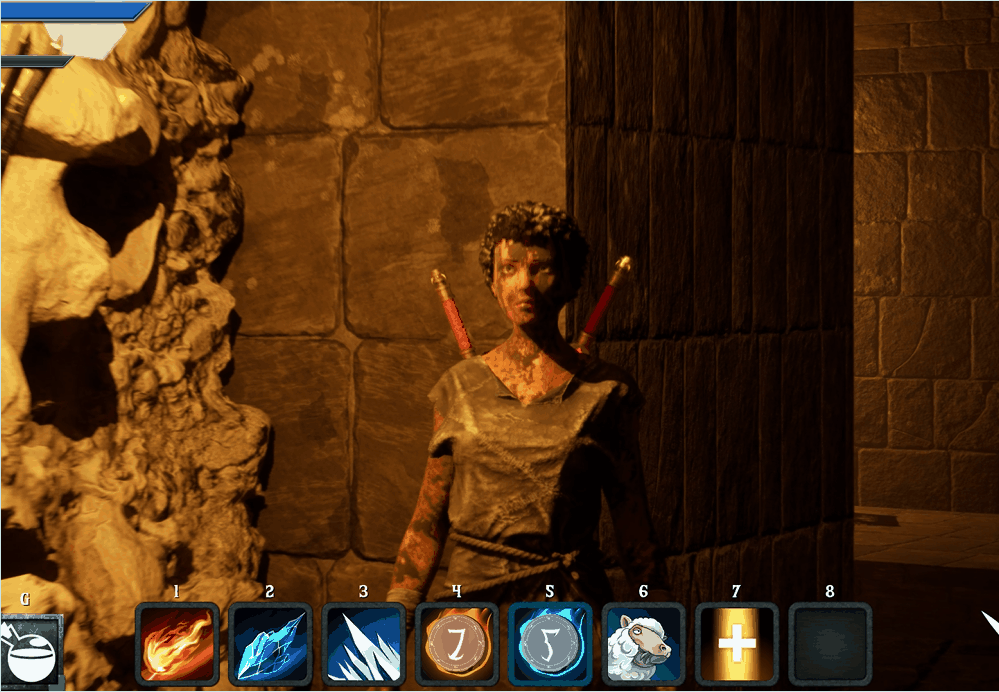
And as crowds force the players into the sewers, they discover that the city's destitute have already started to turn...
Storytelling: Environmental Storytelling

As players venture into the sewers, they encounter a community of people who have already turned.
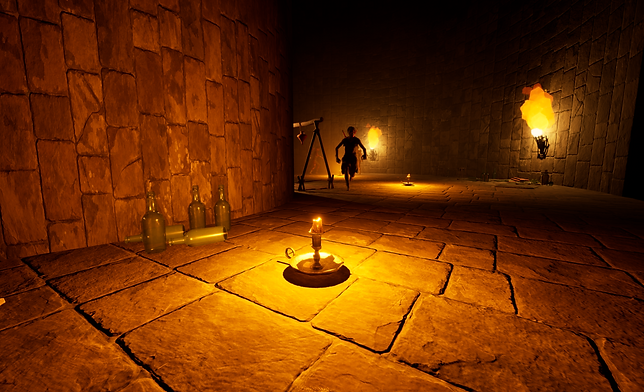
If players look closely, they'll be able to intuit why these people live in the sewers and why've they turned so quickly: Their love of booze has led them consume more murmuring ichor than the rest of the city's residents.
Storytelling: Scripted Vignettes
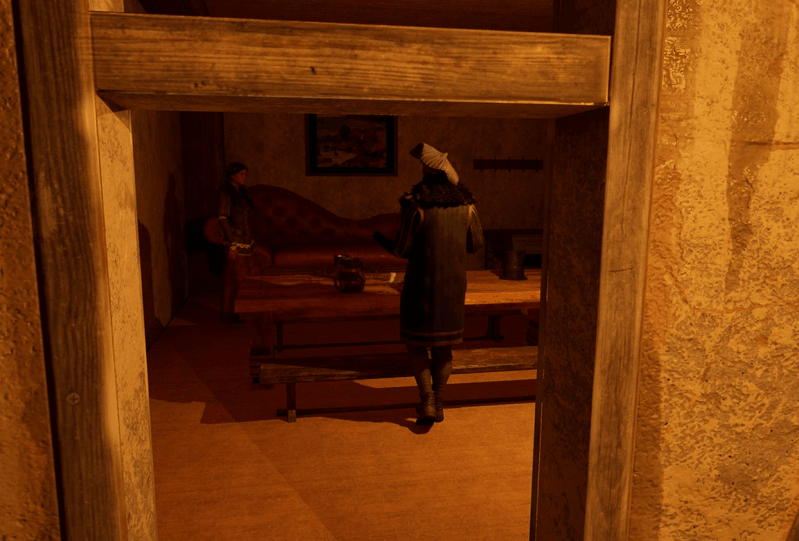
As the player emerges from the sewers, they can look into peoples' home for a glimpse into what life in the city is like on this Darkshire Fete's night eve. In this house, we see people getting ready to go to a party.
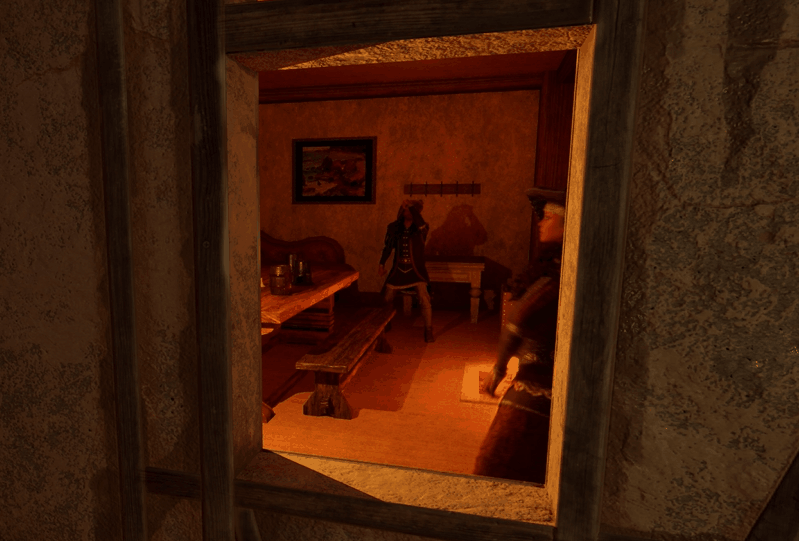
In this home, the revelry has already begun.
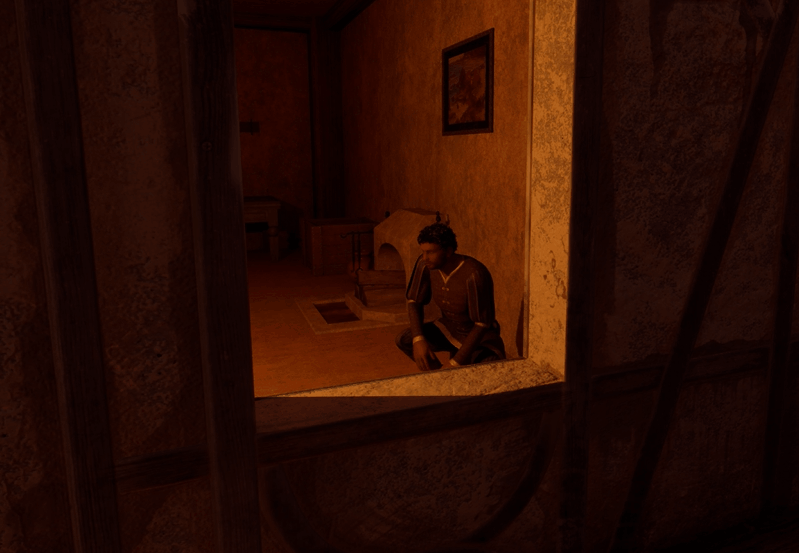
However, in other homes, people feel unwell as they start to turn.
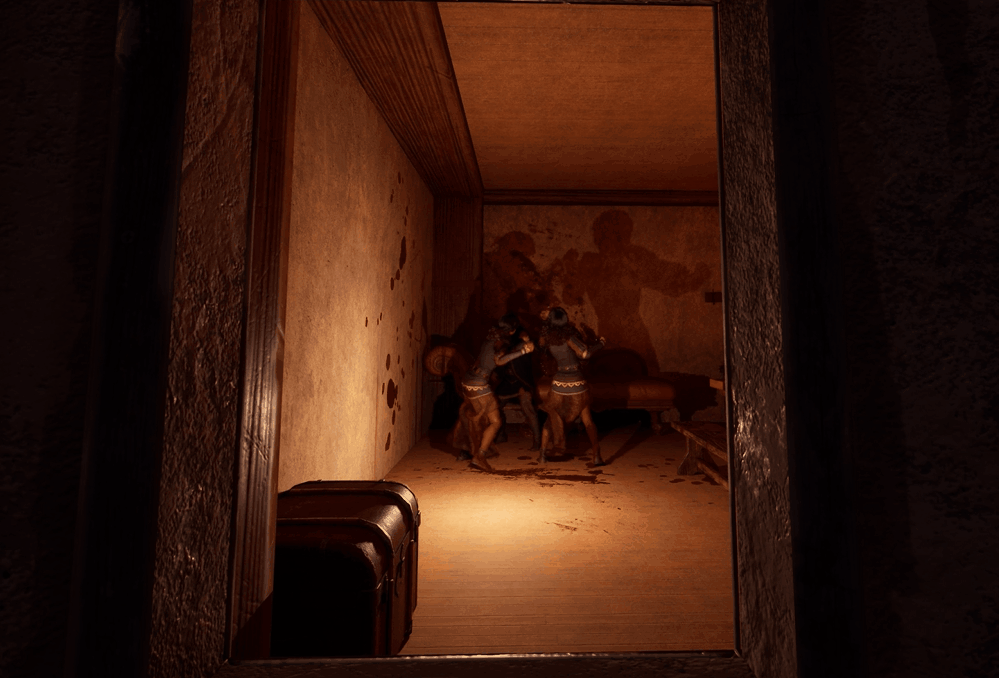
And in others, the night's horrors have already begun...
Encounter Design

The most dangerous enemies in this level are the cultist poison mages. The encounter above is the first cultist encounter in this level. I let the player enter the room from the back, where the cultists can't see them. This allows for the cultists to provide some exposition about how they're switching over to the tainted kegs of murmuring ichor. It also gives the players plenty of time to prepare for this fight. The cultists' types are clearly indicated: they can see a huge sword on one of their backs, meanwhile the other has no weapon, suggesting a magic user. A smart player will place some magical rune traps, then crowd control the mage on the right, blow up the sword cultist, and chain stun the mage before the crowd control wears off.
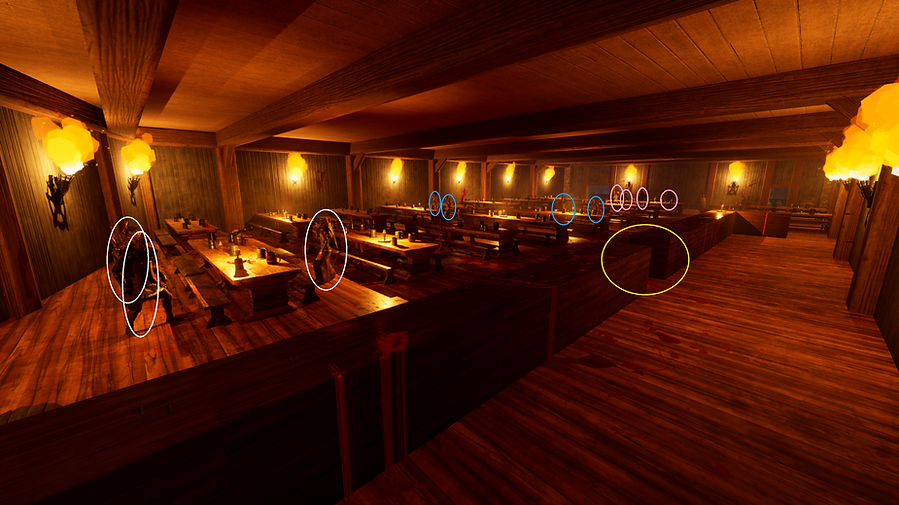
The next encounter is the beer hall which is full of crazed, zombie enemies. Players fight a pack of 3 zombies, then 2 groups of 2 (who will pull each other if the player isn't extremely careful), and finally group of 4. Players will not have a chance for all of their cooldowns to refresh between each fight, however this room provides a lot of great chokepoints for players to exploit their magic rune traps and AoE abilities. In particular, the bar entrance (yellow circle) is a very powerful defensive chokepoint, the aisles between tables are useful too.
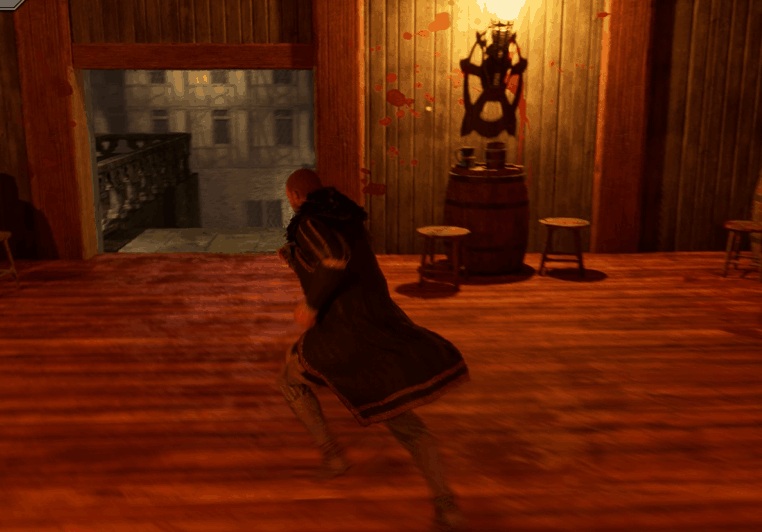
The next fight is only a group of 3 zombies, but it's a surprise! The zombies attack as the player runs out either door of the beer hall, so they won't have time to setup for the fight. If they're quick, they can still use the doorway as a chokepoint though.
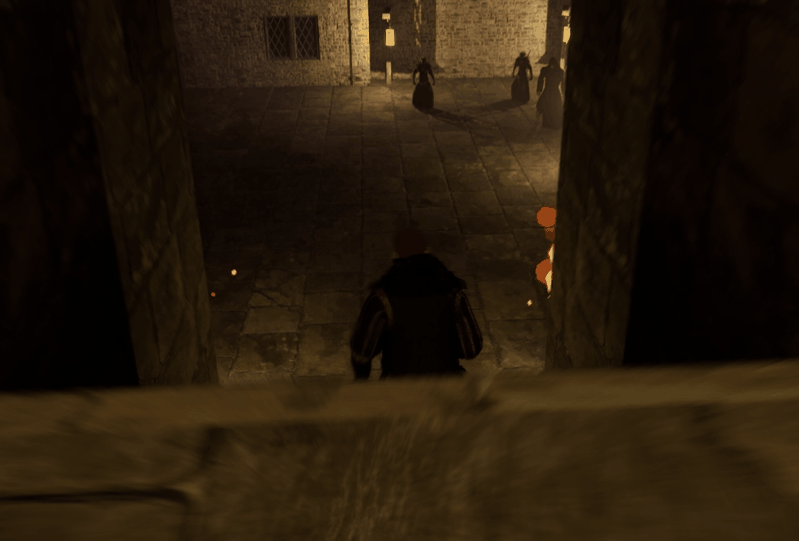
As the player leaves the beer hall and enters the square, they're greeted by a squad of 3 zombies and a cultist mage. Here the cultist mage is positioned at the front of the pack, making him easy to hit with a polymorph crowd control spell, unlike in future encounters...
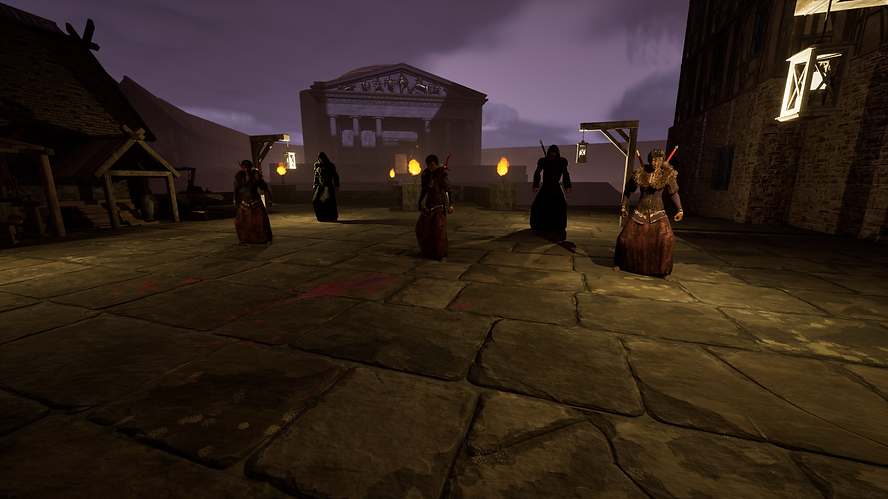
Now that we've ramped up the combat encounters, the town square features full difficulty encounters. There are mixed packs of zombies, melee cultists, and cultist mages. The mages are positioned in the back of packs, making them harder to crowd control. Do you kite enemies while fighting the mage? Do you try to AoE down the zombies while dodging the mage's spells? Do you sacrifice your usual setup to try and land a skill-shot polymorph on the mage? Players will have interesting tactical decisions to make. Also, there are patrolling packs in the square, so players will have to decide if they want spend the time to take them out first or risk pulling them during other fights.
Technical: Data Layers
When players first see the town square, it's full of villagers going about their business. But after the beer hall turns, it's a scene of carnage and full of cultists and zombies. I use data layers to conduct this switch. Because this is a fairly large level, I also use data layers to unload a lot assets when they're not relevant to improve performance. I use some of the long, narrow tunnels and alley ways to load data layers before they're needed.
Rewarding Exploration

Players who remembered the foreshadowed pathway down to a cave by the river can access this cave once they reach the town square. Inside, they'll find a unique spider combat encounter with an epic intelligence ring as a reward.
Storytelling: The Big Choice
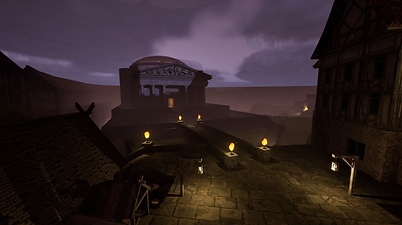

At the start of the level, two of the player's allies leave them to go warn their loved ones about the murmuring ichor. The party's priest heads to his temple and the ranger goes to her family estate. After players reach the town square, they have to chose which ally they want to help first. The choice has dire consequences, as they will arrive just in time to save their chosen ally, but they will be too late for the other.
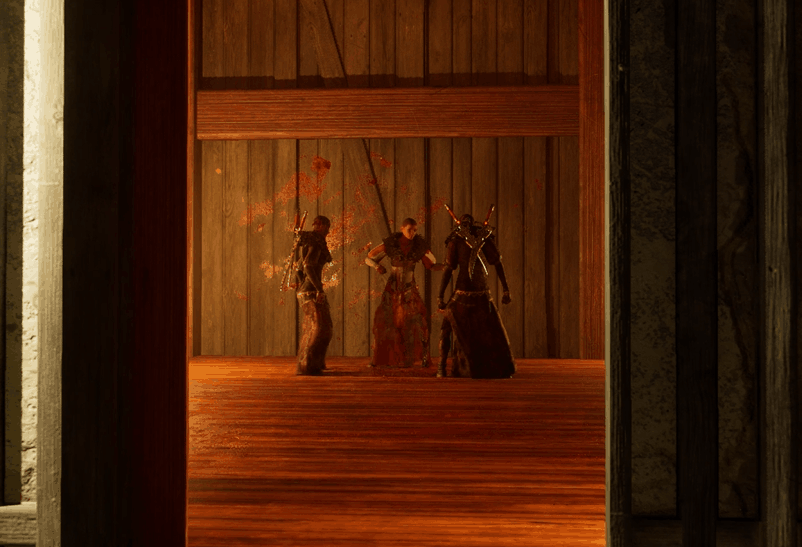
This branching path is fairly cost efficient because the player visits both spaces, just in a different order. Each path has 2 unique cutscenes, so players won't experience the opposite two cutscenes, but these are very short scenes, so it isn't too expensive.
Assets used: Super Grid, Quixel Bridge Megascans, Flexible Combat System by Beardgames, Kitbash3D, Blood Magic Skill VFX pack by suppArt, Greek Island by Scale X, G2 Medieval NPC 02 by Quang Phan, ActoreCore Sample Motions by Reallusion Store, Demon Decal Pack 2 by Ru-Shan, Fantasy Environment Bundle by Denis Rutkovskyi, Gothic Cathderal Asset Pack by Michal Sornat, Fantasy Interior Enviroment by Leartes Studio, Hunter Sound Effects by Valve Corporation, Dark Souls Music by FromSoftware.























